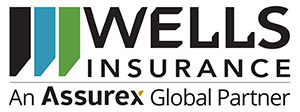
Do lazy days really pass slowly in the Southern climes? Not at Harold W. Wells and Son, Inc., in Wilmington and Southport, North Carolina.
The fast-growing, family-owned agency—one of the largest in its region—takes its commercial insurance and employee benefits customers into the cutting edge of 21st century health plan design, introducing them to consumer-directed health plans, wellness and other strategies designed to reduce their costs and improve the vitality of their employees.
The agency was founded in 1920 by Harold W. Wells Sr. Since the 1960s, Harold W. Wells III and Calvin F. Wells have grown the business. Hal and Steve Wells lead the sales programs in employee benefits and commercial lines, respectively.
Harold says the agency began to market employee benefits in the 1970s with a handful of brokers working double-duty as commercial property/casualty producers and providing health insurance and other employee benefits coverage as an accommodation to their insureds. Like other property/casualty agencies at that time, the agency handled the annual renewals for health insurance, group life and ancillary benefits, but provided little in the way of consulting services and claims management.
In 1990, however, the agency created a separate employee benefits department and began to build the technical expertise to support more sophisticated employee benefits programs including self-funding, contracts with third-party administrators and outside health management firms.
The division now markets a full line of employee benefits products and services, including traditional group health plans; new consumer-directed health plans (CDHP), group life, dental and disability coverages. The agency also recently launched a voluntary benefits division to provide worksite marketing/ supplemental benefits products through payroll deduction.
“As the employee benefits business became more complicated, we realized that we would have to become more sophisticated in our ability to service the unique problems of clients and provide year-round service for their employee benefit needs which involves a lot more than managing annual renewals,” Hal says.
Hal, vice president of employee benefits, says that the agency “has been very sensitive to our insureds’ concerns over their rising employee benefits costs and their need to provide a quality benefits program for their employees. We are doing everything we can to help them ‘stay the course’ in meeting their obligations but also providing opportunities for their employees. This involves not only leading them to new products and services but also creating good, sound relationships with carriers that can provide the resources our insureds need.”
Today, the agency has about 65 employees in two offices, with 12 employees in the employee benefits division. While commercial property/casualty insurance dominates the business mix with about 50% of revenues, employee benefits account for about 25% of revenue, about the same level as personal lines.
Hal says he expects the ratio to remain stable as the agency continues to grow, but as health care costs continue to increase, employee benefits premium volume will also grow as a component of agency volume.
Hal points to a loyal customer base as the cornerstone of the employee benefits division, built originally on cross-selling property/casualty insurance customers but growing steadily by referral from customers and other professional service providers in the region.
Account Executive Greg Gibson, an employee benefit agent for more than 20 years, says, “We like to say that as an agency, we do what we say we are going to do. We make commitments to our customers and follow through with the services we promise. As a result we have been fortunate to maintain a high retention rate. Now, new business is driving our growth and much of that comes from referrals.”
Greg says the agency pursues a wide range of employers and employee groups, ranging from two to more than 1,000 employees, but specializes in small to medium-sized groups ranging from 25 to 200 participants. Employers of this size are particularly vulnerable to rising health care costs as health insurers wrap them into a pooled rating with other employers who may have a poorer claims history and a weaker commitment to employee health management. Smaller, more rural employers are also hit harder by a lack of competition among health insurers.
Hal notes that North Carolina, like many other regions, has seen diminishing health plan competition, down to a handful of providers from more than a score of health insurance carriers 20 years ago. Blue Cross/Blue Shield of North Carolina and United Healthcare dominate in the region providing a large percentage of the coverage for fully insured plans.
“Health care costs are very high in our region and highest in the more rural areas. It’s hard to manage competition and drive down costs with managed care when there’s only one regional hospital in a tri-county area. Costs are 5% to 10% lower in the cities just because of the access to other providers.”
“However, larger employers have adequate size to benefit from health management strategies, wellness programs and more sophisticated plan designs such as CDHPs and self-funding, notes Steve Sims, account executive. As a result, he often recommends that employers with 100 or more employees look at self-funded health plans and use the resources of third-party administrators to track their costs and claims.
“I’ve never met a client who liked a rate increase, but if the client understands where the costs are coming from, although they may not like the increase, at least they know where their dollars are being spent.
Sims says some smaller employers may also benefit from a self-funding arrangement, but larger firms have the best prospect of benefiting from health management and wellness services that are now available from local health plans and independent providers.
He says many employers of size can benefit from on-site health services, usually a nurse practitioner that can manage a health risk assessment program and provide wellness coaching, smoking cessation and weight loss programs at a plant or office location,
“We have seen large employers retain a health management firm and begin a program that, in the long run, will recover those costs and much more in a relatively short time. Industry return on investment for health management firms is approximately 3-to-1, but I have seen returns as high as 22-to-1 in some cases.”
The agency has also introduced health savings accounts (HSAs) and other CDHP plan designs to the region, but the programs have yet to take the area by storm. “Education is critical,” says Gibson, “for both the employer and the employee.”
HSAs—available from local carriers—have been more popular than the sister plan health reimbursement accounts (HRAs) which require higher levels of employer contributions, notes Gibson.
Deductibles generally range from $2,000 to $4,000. The agency often recommends that employers accelerate contributions to HSAs to get employees started. Low-wage employees often need a little “seed money” of about $500 to fund a portion of their accounts, he says.
The agency also relies on its relationships inside and outside of the insurance industry as support for its employee benefits growth, Hal says. “Many of our producers have come from the carrier ranks and have brought with them an inside perspective on underwriting and health claims management. This gives us an advantage in marketing our clients to the carriers and communicating their risk profile in the best possible light.”
The agency has maintained an exceptional relationship with the area’s largest health plans. Earlier this year, the Wells agency was successful in getting one of its larger clients into a pilot wellness initiative program that provides health management services to their employees. The estimated savings in this program is $120,000 over a three-year period.
“They were very excited about participating in the program and bringing additional services to their employees—without additional costs,” Sims says. “Programs like these are a direct result of the relationships we have been able to build with our carriers and, in the long run, those relationships bring benefits back to our clients.”
Hal notes that the agency is a member of Sitkins International, The Council of Insurance Agents and Brokers, and Intersure. “We have learned from our relationship with Sitkins International that building relationships with ‘trusted advisors’ outside the insurance industry provides business and strategic services to our clients. The agency works with a regional law firm and a CPA firm in providing strategic business information to both present and prospective clients, with periodic seminars on risk management, employee benefits and general business topics,” he says. “It’s just another way to add value to the relationship with our clients.”
Recent client seminars focused on risk management for the construction industry, one of the largest industries in the Wilmington region, and the very challenging topic of health care costs.
The health care costs seminar featured a representative from both a health plan and the local hospital. This forum allowed participants to ask open and honest questions about rating, cost trends, claims management and hospital billing.
“These seminars provide both education and an introduction to professional service firms that may provide value in the future,” Hal says.
And, of course, “the door swings both ways,” Sims says. “Education is a very effective way to communicate both the technical information our clients need and the value of the firms that provide that information. They often lead to new business from both participants and their referrals.”
For more on this article visit www.roughnotes.com

Leave a reply